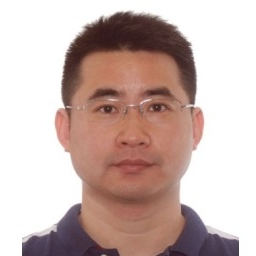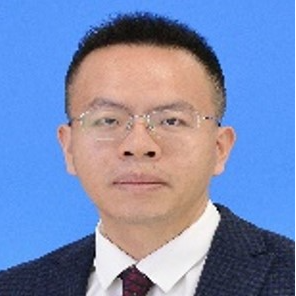Selected Papers from the 8th Asia Pacific Conference on Optics Manufacture & 3rd International Forum of Young Scientists on Advanced Optical Manufacturing
A special issue of Micromachines (ISSN 2072-666X). This special issue belongs to the section "D:Materials and Processing".
Deadline for manuscript submissions: closed (15 December 2023) | Viewed by 9533
Special Issue Editors
Interests: intelligent precision machining; surface integrity; precision measurement
Special Issues, Collections and Topics in MDPI journals
Interests: manufacturing process mechanics; 3D printing; ultra-precision manufacturing and metrology; freeform measurement and characterization; manufacturing process optimization; fring projection; 3D vision; VR/AR/MR; light field; machine learning
Special Issues, Collections and Topics in MDPI journals
Interests: space optical remote technology; advanced optical manufacture technology
Special Issues, Collections and Topics in MDPI journals
Interests: micro-nano manufacturing
Interests: micro/nano manufacturing; precision machining; surface finishing; atomic and close-to-atomic scale manufacturing
Special Issues, Collections and Topics in MDPI journals
Interests: precision engineering; ultra-precision machining technology
Special Issues, Collections and Topics in MDPI journals
Interests: ultra-precision machining; polishing/finishing; abrasive machining technology
Special Issues, Collections and Topics in MDPI journals
Special Issue Information
Dear Colleagues,
This Special Issue will publish selected papers from the 8th Asia Pacific Conference on Optics Manufacture(APCOM2023)and 3rd International Forum of Young Scientists on Advanced Optical Manufacturing(YSAOM2023)in Micromachines, which will be held in Shenzhen, China, 4–6th August 2023.
We aim to collect high-quality research papers and review articles from APCOM and YSAOM 2023, which will focus on advanced optical manufacturing technology, optical intelligent manufacturing, ultra-precision manufacturing, precision measurement, intelligent sensing and control, and material science. The conference will cover the following main topics:
- Large optical mirror and telescope technology;
- Micro-nanostructure optics and manufacturing technologies;
- Ultra-precision machining technology for optical complex surfaces and functional structures;
- Ultra-precision optical measurement technology and equipment;
- High-performance manufacturing technology for short-wavelength optical components;
- High-efficiency optical precision processing technologies and new methods;
- High-performance optical microstructure manufacturing process and equipment;
- Advanced technology and equipment of optical coatings;
- Optical design, assembly, and system modeling technology;
- Manufacturing and applications of optofluidic chip and liquid crystal optics;
Papers attracting the most interest at the conference or that provide novel contributions will be selected for publication in Micromachines. These papers will be peer-reviewed for validation of research results, developments, and applications.
Prof. Dr. Jiang Guo
Prof. Dr. Lingbao Kong
Prof. Dr. Donglin Xue
Dr. Ping Gao
Prof. Dr. Chengwei Kang
Dr. Zhenzhong Wang
Dr. Chunjin Wang
Guest Editors
Manuscript Submission Information
Manuscripts should be submitted online at www.mdpi.com by registering and logging in to this website. Once you are registered, click here to go to the submission form. Manuscripts can be submitted until the deadline. All submissions that pass pre-check are peer-reviewed. Accepted papers will be published continuously in the journal (as soon as accepted) and will be listed together on the special issue website. Research articles, review articles as well as short communications are invited. For planned papers, a title and short abstract (about 250 words) can be sent to the Editorial Office for assessment.
Submitted manuscripts should not have been published previously, nor be under consideration for publication elsewhere (except conference proceedings papers). All manuscripts are thoroughly refereed through a single-blind peer-review process. A guide for authors and other relevant information for submission of manuscripts is available on the Instructions for Authors page. Micromachines is an international peer-reviewed open access monthly journal published by MDPI.
Please visit the Instructions for Authors page before submitting a manuscript. The Article Processing Charge (APC) for publication in this open access journal is 2100 CHF (Swiss Francs). Submitted papers should be well formatted and use good English. Authors may use MDPI's English editing service prior to publication or during author revisions.
Benefits of Publishing in a Special Issue
- Ease of navigation: Grouping papers by topic helps scholars navigate broad scope journals more efficiently.
- Greater discoverability: Special Issues support the reach and impact of scientific research. Articles in Special Issues are more discoverable and cited more frequently.
- Expansion of research network: Special Issues facilitate connections among authors, fostering scientific collaborations.
- External promotion: Articles in Special Issues are often promoted through the journal's social media, increasing their visibility.
- Reprint: MDPI Books provides the opportunity to republish successful Special Issues in book format, both online and in print.
Further information on MDPI's Special Issue policies can be found here.












